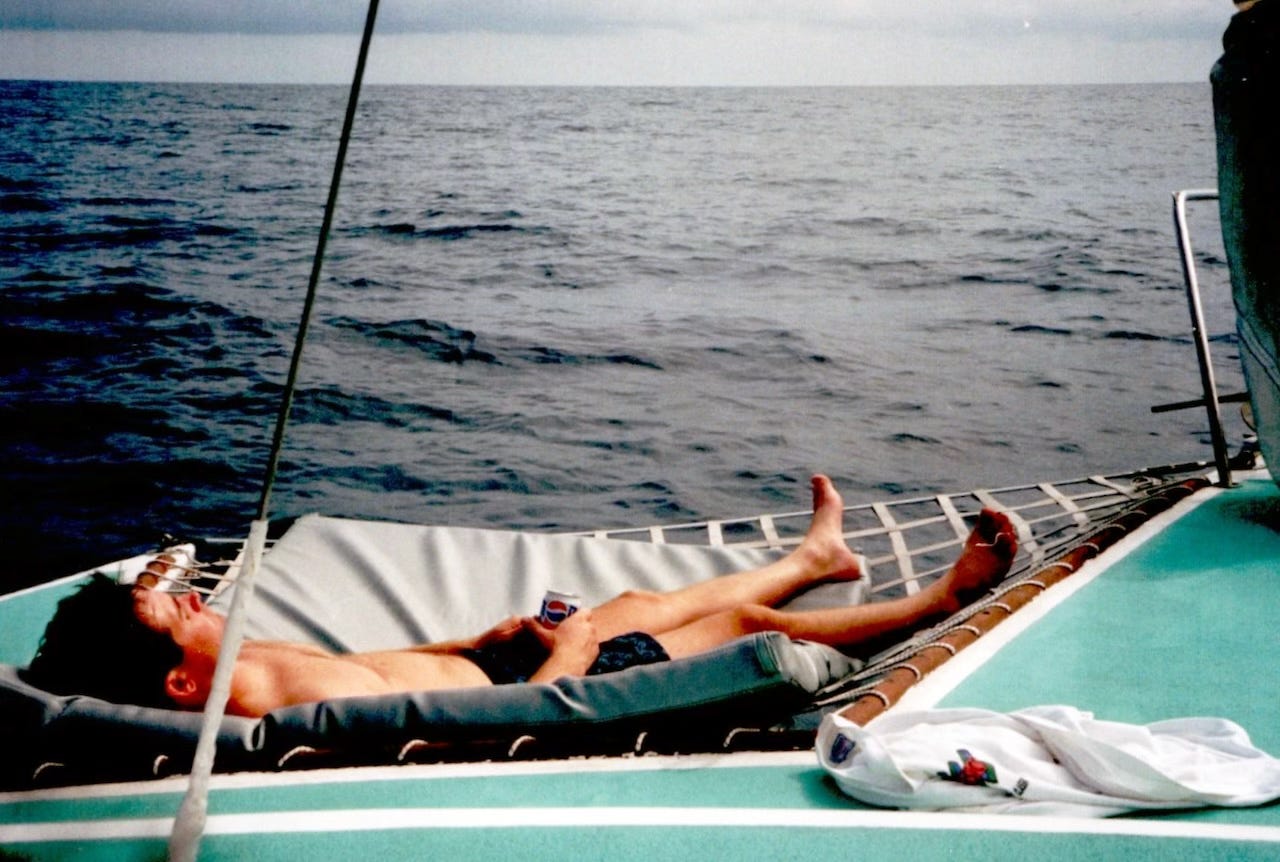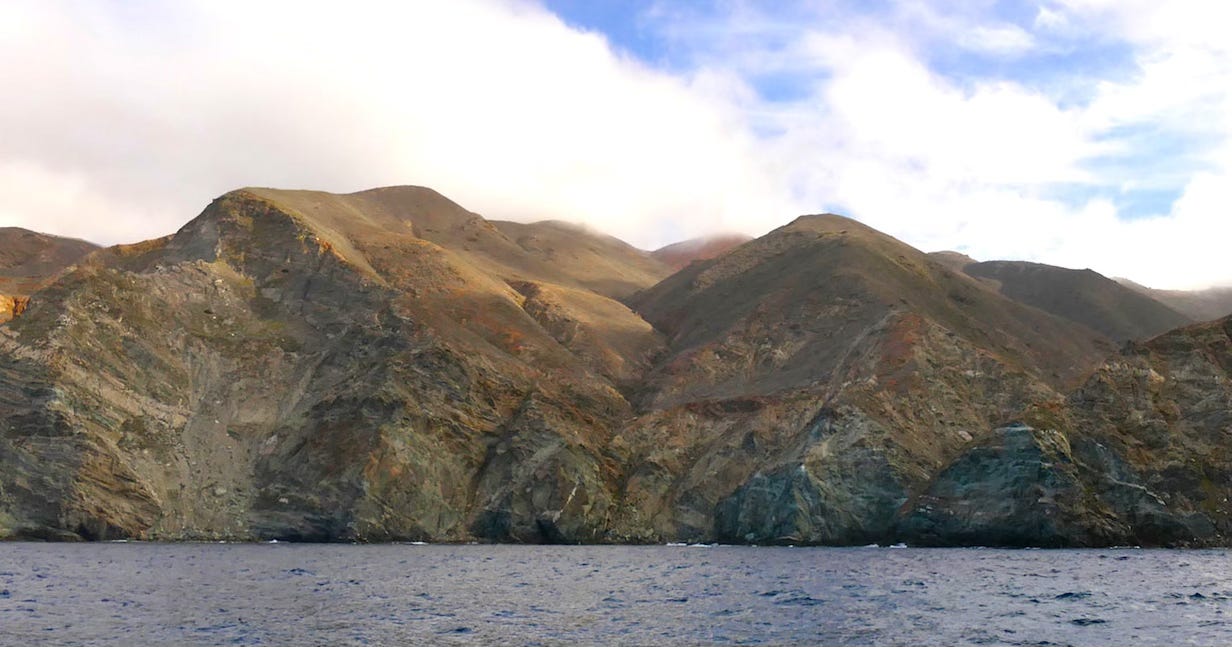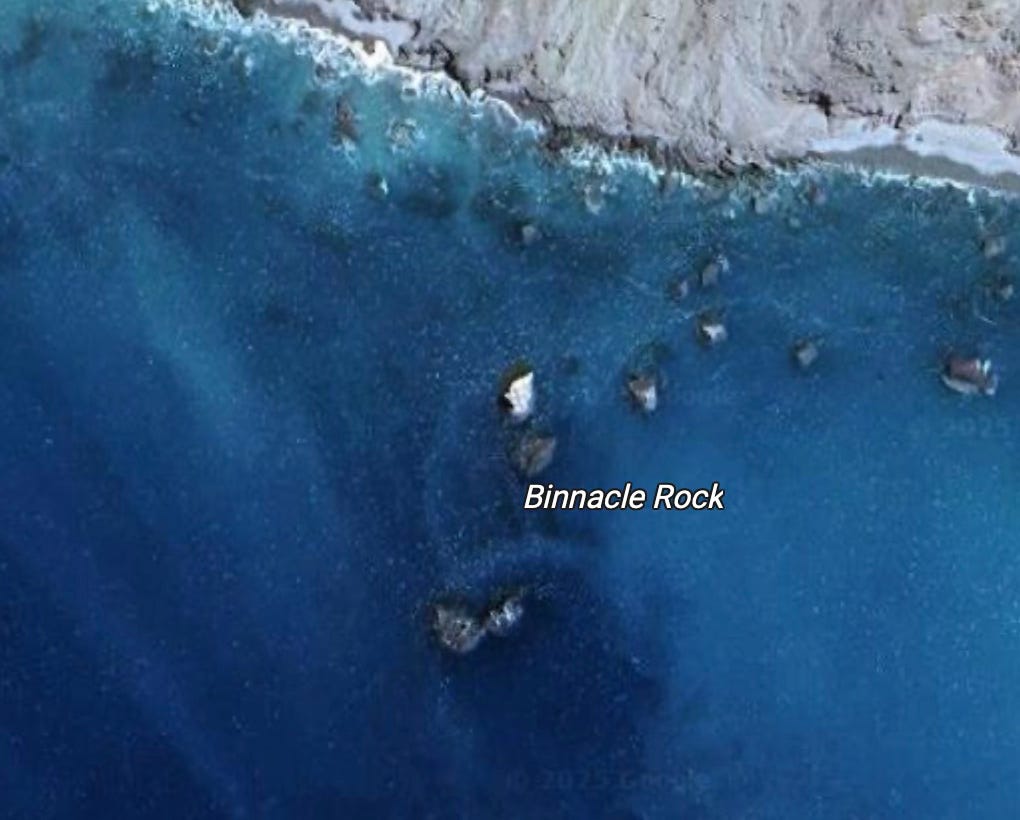Thanks for reading my newsletter separating reality from bullshit in pop culture. Today I have for you an example which I hope is a powerful one. If you like it, please consider becoming a paid subscriber if you aren’t already; I’ll thank you with an extra weekly installment.

The year was — god, I don’t know, like ‘95 or thereabout. My dad had a ⅓ share in a Gulfstar 47 ketch, so my buddies and I would take it out all the time. One trip a group of four of us decided to embark from Newport Beach, CA out to Santa Barbara Island, an ambitious trip for such a heavy, sluggish boat. The wind and sea are both in your face the whole way, and that thing points about as well as a city bus.
The good news here is that we gave up. Once we passed the northern tip of Catalina, it got to be about 4pm; we were maybe a third of the way; and the wind and seas were getting really big. We abandoned the effort and ran downwind to Cat Harbor on the windward side of Catalina, where we rented a mooring and spent the night.
The reason that’s the good news is that there is only one mooring (or was at the time) in the one safe harbor on tiny Santa Barbara Island — and it turned out to have already been occupied by a couple guys on a sportfisherman. The wind kicked way up during the night, the mooring anchor dragged, they ended up on the rocks and both guys lost their lives. If we had gotten there first, that would have been us. If we had gotten there after them, as we would have, well then we’d have been really screwed because then we’d have had a 30-mile downwind run in the dark with huge following seas.
Now the purpose of this whole expedition was to bury a six pack of root beer on Santa Barbara Island, and then come back years later with a treasure map and recover it, because why not. But that plan was now at the bottom of Elephant Seal Cove. So we contrived a new plan: We’d head south from Cat Harbor along the windward side of Catalina and come up and around to Avalon, where we could get a proper mooring and go ashore for dinner and whoop it up in the small island town. To get there, we’d round the absolute southernmost point on the island, and I knew from experience that there were small beachlets speckled here and there. That whole side of the island (like most of the island) is all bluffs; very few places you can go ashore. What’s more, the dropoff is very steep. There’s almost no shelf or beach at all, from the rocks it drops straight down to deep blue water. But I figured we’d give it a shot. We’d find someplace we could land…

We left one guy on the boat on anchor watch. We were aware of the concept of the kedge anchor, but had never used one; this is a second anchor you drop off the stern of the boat. Properly anchoring means you have at least 5 times as much rode (anchor line) as the depth of the water; if it’s 20 feet deep, you should be swinging at least 100 feet away from the anchor. This keeps the line pulling the anchor sideways into the seafloor, rather than lifting it off.
Well, we were in much more than 20 feet of water. It had to have been at least 50, maybe more, absolutely dark blue water. And because the bottom was so deep, we were much closer to some rocks than we should have been. In short, this was an absolutely unsafe and unacceptable anchorage. We dropped the main anchor and the kedge, let out maybe 10 or 20 more feet of rode than the depth, and left the one guy aboard by himself, very nervous (and rightfully so).
In the meantime, we jolly three got into the Zodiac, fired up the outboard, and set out to find a place to bury the root beer. I was on the tiller arm. At least we had the sense to be wearing lifejackets. As we paralleled the cliffs with the swells rising and falling right up against them, it quickly became clear that we might not have any luck at all. We kept going, looking for anything; 10 feet of rocky beach would have sufficed. But there was nothing.
Soon we were around a point, out of sight of the boat.
If only we had taken a look back before disappearing around the point… but alas we did not.
Finally, we decided to just go for it. There was a place where rocks and debris slid down a little canyon to the water, making a “beach” perhaps a dozen yards wide. It was calling to us. For those unfamiliar, the safe way to bring a boat to the shore is to ride on the back of the wave. Match its speed. That keeps the most water between you and the bottom. Stay right there all the way up onto the beach.
So that’s what I did.
Until, 10 feet from the shore, the water dropped out from under us. A big swell came up from behind us, snapped us around sideways, lifted us 5 feet into the air, and flipped us upside down onto the rocks.
Stuff went everywhere. Us, the root beer, oars, lifejackets, and — the outboard motor.
In genuine distress from the danger of where we were, the three of us did manage to pull the outboard out of the water and drag it up onto the dry landslide “beach”. But it was full of salt water. If that motor ever ran again, I never heard about it. We found three or four of the cans of root beer, most of them hissing and spurting. Too upset to care anymore, we jammed the survivors into some rocks (where they surely did not survive the next high tide). Then we set to business trying to get the boat back together.
During a lull in the swells, we managed to all three get in, push away from the rocks with the one oar we had, and we all paddled to get as far out and away from that hazardous coast as quick as we could.
When we were just about exhausted, we saw the boat.
The dude we’d left on board was waving his arms in a wild panic. He told us later he’d tried to find an air horn but couldn’t. The boat seemed a lot closed to the rocks, and it was moving up and down with the swells a lot more than it had been when we’d left.
Our ridiculously inadequate anchoring job had failed. The anchors had dragged as the powerful swells tried to drive the heavy boat onto the rocks.

Why didn’t he just start the motor and drive out of there? Well, he could have, except for two reasons: (1) We had the keys, on the ring with the key for the outboard (miraculously not lost); and (2) the kedge anchor rode had managed to wrap itself around the prop shaft. Although on that type of boat you can’t see the prop — it’s too far forward where the hull is too wide — the anchor rode was visible going down to it and then off at an angle from it and down to the depths. He had tried to free it with a boathook but had no luck, and without the keys he couldn’t have started the motor anyway. He wanted to cut the rope, but couldn’t find anything on deck to cut it with and didn’t want to go below.
So the three of us paddled, and paddled, and paddled; one with the oar, the others with their hands. It seemed miles away. But eventually we did get there. The boat and the Zodiac were both heaving as the swells alternately covered and exposed 15 feet of the big rocks, seeming no more than perhaps 10 or 20 yards away by then. With all four of us on board, pulling on anchor lines with all our strength, hands blistered and bloodied, we at last got the kedge anchor up and free of the prop, cranked the diesel, and barreled out of there as fast as we could. Later we worried about raising the main anchor, which had been hanging in blue water pretty much the whole time anyway.
The point of all this…
People who don’t know what the hell they’re doing, like the heroes of today’s epic saga, should not be doing important things. Things where people’s lives are at stake.
We see this all around us. Everyone from wellness influencers, quack unlicensed “doctors” and coaches doling out advice and supplements, and yes even in higher up places like government and corporate America. If you don’t know what the hell you’re doing, you shouldn’t be doing it. Leave it to people who have some semblance of a clue, or other people can die — like, for real die.




We had a saying in the Navy, "The sea is always trying to kill you. Sometimes it wins."
Too many people think, if they were good at one thing, they must be good at all things. PS: glad you survived, Brian.